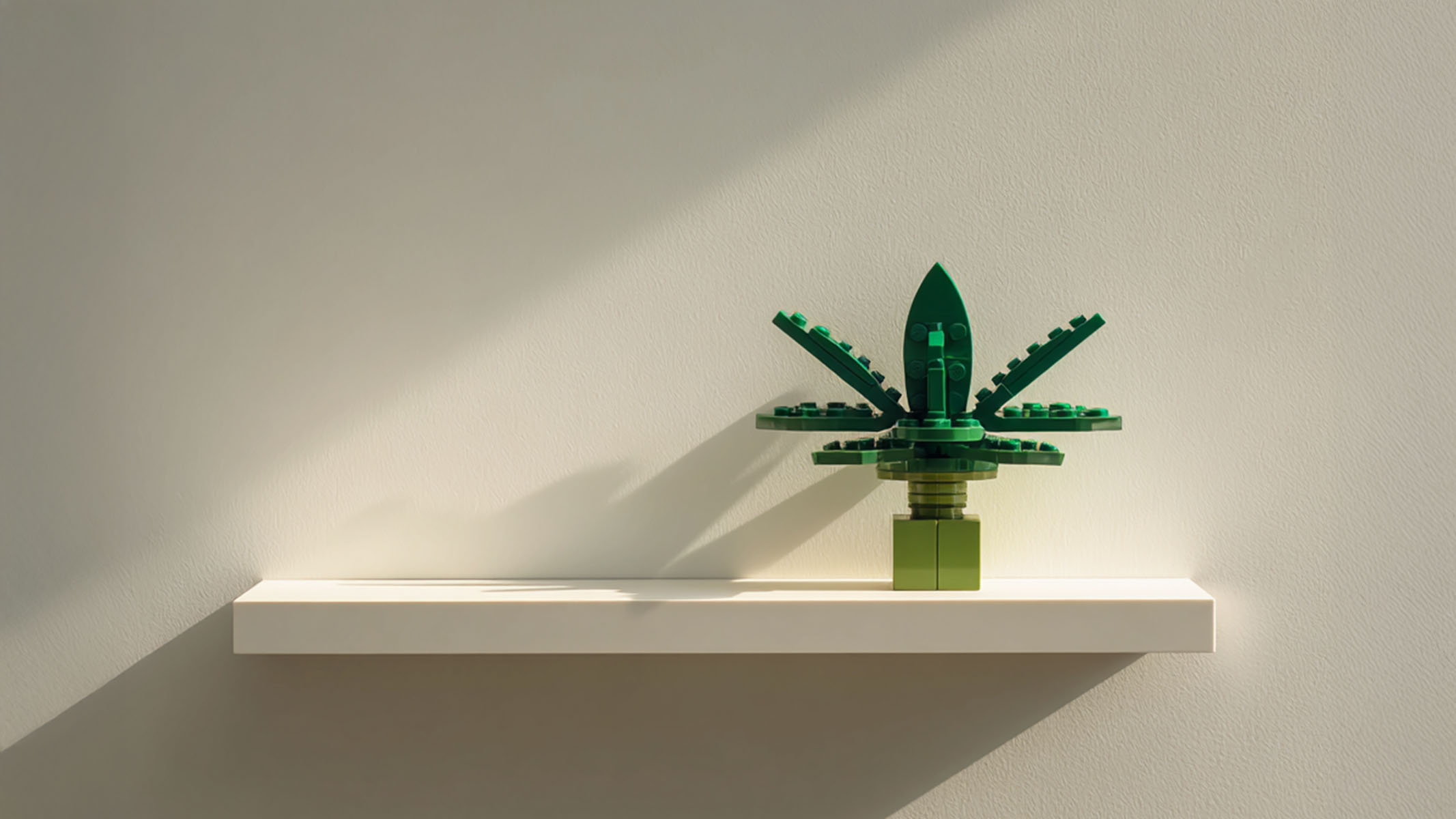As kids embrace screens at younger ages, toy trends are shifting. In response, design is focusing on nostalgia, limited-edition releases, and high-end collectibles, making adults the fastest-growing segment in the toy industry and driving innovation in design, packaging, and brand storytelling.
By:
Gregor Mittersinker
July 31, 2025
For generations, the toy industry was built around the simple idea that kids just want to play. From LEGO bricks and Barbie dolls to Hot Wheels and Nerf blasters, toys are designed to spark imagination, encourage physical activity, and promote social play. But over the last two decades, the traditional toy market has undergone a profound transformation. Children are growing up faster, and smartphones, tablets, and an endless stream of digital content increasingly capture their attention. The rise of the iPad generation has fundamentally reshaped what it means to be a kid and what it means to design toys for them.
In response, toy designers are adopting alternative strategic approaches. The rapid expansion of the collectible toy market is targeting adult consumers rather than traditional child demographics. Once a niche corner of the industry, adult-oriented collectibles are now among the fastest-growing segments of the global toy market. From high-end action figures and detailed replicas to nostalgia-driven reissues and limited-edition pop culture tie-ins, toy companies are learning that the kids who once outgrew their toys are now the ones driving industry growth.
.%20Linkedin.jpg)
In the pre-digital era, toys were central to childhood. Kids’ bedrooms overflowed with puzzles, plush animals, building blocks, and make-believe playsets. But that golden age began to wane with the rise of personal technology. The 2010 launch of the iPad—and the explosion of mobile gaming and streaming content that followed—marked a turning point. Suddenly, the appeal of an action figure paled in comparison to the immersive world of Roblox or YouTube Kids. By the time a child is five years old today, chances are they’ve already had thousands of hours of screen exposure. In that context, many traditional toys seem slow, static, or worse, boring. This shift has been catastrophic for many toy makers. Companies that once dominated the market found themselves losing relevance, battling shorter attention spans, and scrambling to compete with digital platforms that update daily and demand constant interaction. As children moved their playtime into virtual spaces, entire categories of toys: board games, building kits, dolls, and figurines, started shrinking.
Another challenge for toy designers is the accelerating pace of childhood. Psychologists, educators, and parents alike have noted how digital exposure and cultural shifts are making kids more mature, more image-conscious, and more technologically savvy at younger ages. A 10-year-old today may seem like a 14-year-old from a decade ago—not only in the content they consume but in how they perceive themselves and their interests.
This has created a squeeze in the traditional toy demographic. Where companies once had a solid market of children aged 3 to 12, they now find that kids are “aging out” of toys as early as 7 or 8. Instead of wanting dolls or action figures, they want smartwatches, social media access, or even makeup tutorials and fashion accessories.
For toy companies, this compression of the childhood window has been devastating. With fewer years to capture a child’s attention, the pressure on toy designers to innovate—or pivot—has never been greater.

Faced with shrinking interest from their original target audience, toy companies started looking elsewhere and discovered something unexpected: Grown-ups are still playing.
Kidults, a term describing adults who enjoy toys, games, and hobbies traditionally associated with children, have emerged as one of the most powerful forces in the toy world. In 2024, Kidults accounted for nearly 30% of all toy sales in the U.S., according to data from the Toy Association. That number is only expected to grow. For many adults, toys aren’t just playthings—they’re collectibles, status symbols, or nostalgic reminders of simpler times. The emotional connection to a beloved cartoon from the 80s or 90s, the thrill of hunting for a rare Funko Pop, or the satisfaction of assembling a 5,000-piece LEGO set—these experiences tap into a deep sense of identity and joy. This shift has prompted major toy companies to recalibrate their product lines. Increasingly, they’re designing toys not for little hands, but for grown-up collectors. That means more detail, higher quality materials, limited editions, and packaging that doubles as display.
Designing toys for adults is a fundamentally different challenge. Traditional children’s toys prioritize safety, durability, and open-ended play. They’re meant to be banged around, drooled on, and outgrown. Adult toys, by contrast, are often designed to be preserved, displayed, or even kept unopened in mint condition. In today's world, packaging plays a crucial role in the product. A Star Wars Black Series figure or a collectible Transformers reissue might sit untouched on a shelf for years, appreciated more as a work of art or memorabilia than something to be played with. The experience of “unboxing” has become a kind of ritual, often shared on social media and YouTube, reaching millions of viewers.
Toy companies are responding by elevating the aesthetics and production values of their adult lines. Sculpting, painting, articulation, and authenticity are all scrutinized by a passionate, discerning audience. Designers must now think like industrial artists as much as play engineers.
The rise of adult collectibles is also deeply entwined with Pop culture. Franchises like Star Wars, Marvel, DC, Pokémon, and even The Office or Stranger Things have become rich mines for collectible merchandise. Licensing deals drive much of the market, with fans eager to surround themselves with physical expressions of their favorite shows, movies, or video games. But it’s not just about what’s current, it’s also about what’s past. Nostalgia is a powerful force, and toy companies are leveraging it heavily. Reissues of '80s GI Joe figures, original Nintendo merchandise, or even classic My Little Pony sets have become hot sellers among Gen Xers and Millennials. For many, collecting toys isn’t about regression; it’s about reclaiming joy, emotion, and identity from their youth. In a world that often feels fast, chaotic, and digital, physical toys offer a form of grounding, focus, and even mindfulness.
The adult toy boom is also blurring the line between toys and lifestyle products. LEGO, for instance, has embraced this transformation, featuring intricate architectural sets, botanical models, and pop culture collaborations like the Friends Central Perk café or the Home Alone house. These aren’t toys in the traditional sense; they’re statement pieces, meditative hobbies, and interior design accents. Similarly, designer toy brands like Super7, Medicom, and Kidrobot have turned collectibles into high-end art. Their products are sold in galleries and boutique shops rather than toy aisles. They cater to adult collectors who see toys as a form of self-expression, much like fashion or vinyl records.
In this context, toys are no longer just products—they’re experiences. They tell stories, evoke emotion, and bring people together through fandom and shared interests. That’s a powerful shift from toys as mere children’s play.
Still, the digital world isn’t going away—and some of the most forward-thinking toy companies are looking to bridge the gap between virtual and physical play. Augmented reality (AR) toys, app-integrated games, and NFC-enabled figures (like Amiibos) offer a hybrid experience that appeals to both kids and adults. Mattel has explored this concept with its Hot Wheels NFT Garage, which combines physical car collectibles with blockchain ownership. Meanwhile, Bandai Namco continues to develop virtual pets and Tamagotchi-style experiences for mobile. The goal isn’t to fight the screen, it’s to find ways to make toys relevant again in a screen-dominated world. For adult collectors, this may mean digital loyalty programs, gamified collecting experiences, or integrated storytelling across media platforms.

Reinventing Play for a New Era
The toy industry is undergoing a profound transformation, one that expands the very definition of play. Once centered almost exclusively on young children, the market now embraces a broader, more inclusive audience, recognizing that the desire for imagination, connection, and joy doesn't end with adolescence. Adults are increasingly returning to toys not just as a source of nostalgia, but as a form of self-expression, community, and even identity. The explosive success of collectible card games and high-end collectibles has helped fuel this shift, turning collection and display into a global lifestyle phenomenon.
This rise of adult-focused play is more than a commercial trend; it marks a cultural reappraisal of how we engage with objects of creativity and memory. It challenges designers to reimagine toys not just as tools for child development, but as meaningful artifacts that resonate with emotional history, fandom, and storytelling. Ultimately, toys are no longer just playthings. They are vessels of memory and identity, symbolic, personal, and increasingly sophisticated. For the grown-ups who still believe in wonder, the future of play has never looked more inspiring.

Previous
Next

.png)
Innovation